Clutch Performance? Even BMW Is Eliminating The Manual Transmission
The manual transmission isn’t dead. But it appears to be dying. Now Munich is making sure everybody knows BMW has a hand in the demise of the third pedal.
At the traditional core of BMW’s U.S. lineup, the manual transmission 7 Series disappeared three decades ago. So foreign is a manual shifter to buyers in the full-size luxury limo category, this seems entirely natural.
M models aside, the U.S. market lost BMW 5 Series manual transmission availability after the 2014 model year.
What’s next?
“Across the world, virtually all of our 3 Series models and above already have automatic transmissions,” BMW sales boss Ian Robertson tells Car And Driver.
“We will certainly see fewer and fewer manual transmissions being offered,” says Robertson.
Ultimate Driving Machine?
The Prius Prime's Sales Seem to Confirm Toyota's Worries About the Regular Prius
Can a hybrid vehicle really shine when there’s a plug-in sibling hogging both the spotlight and the technological podium? For some automakers new to the game, time will tell. But at Toyota, which first made “hybrid” a household word, it seems the introduction of a new Prius variant has tentatively confirmed doubts about the viability of the stock Prius.
We’ll gain better perspective as 2017 plays out, but so far, it’s looking like the Prius Prime plug-in is doing well, and the Prius is maintaining the status quo. Which is to say, it’s not doing well.
2018 Toyota Yaris: A Slightly Meaner Hatch, in Looks Only
If you didn’t stay up to the wee hours last night excitedly singing the Toyota Yaris’ praises in an internet chat group, you’re forgiven. Demand for the subcompact hatch has fallen to remarkably low levels compared to years past, as newer, more dynamic hatches increasingly hijack buyers’ attention.
Still, the subcompact segment isn’t one Toyota wants to yield to its rivals. As such, the little Yaris (not to be confused with the Mazda 2-based Yaris iA) is due for a makeover. While the refreshed 2018 Yaris hasn’t been to the gym, it does look like it stared in the window and took notes.
Jeep Tries to Hide the Compass' Ugly Older Sister as New Model Bows
Thanks to the weird and inexact science of pinning down a model year for a new introduction, Jeep finds itself playing a game of “hide the Compass.” The old Compass, that is.
You know the one. Barely updated over its decade-long lifespan, hated by TTAC but loved by consumers? That Compass. Certainly not the larger, second-generation model, with its new platform, upgraded looks and carryover engine. That global model is the one Jeep wants everyone to know about and, of course, buy.
Unfortunately, the model year conventions found in some overseas countries means the global model launching this spring carries a 2017 designation. As does the final cohort of the old Compass.
No More Niches: German Luxury Lineups Likely To Shrink, Not Expand
Choice is good for car buyers. But in the never-ending quest to produce incremental volume gains, the planet’s largest premium auto brands agree that certain niches are quickly becoming untenable.
Known for questioning in 2014 whether the global sports car market would ever recover from its post-recession collapse, BMW sales boss Ian Robertson told Car And Driver earlier this month that “some body styles will be removed in the future.”
Meanwhile, the head of Mercedes-Benz Dieter Zetsche said at the Geneva auto show that the lack of Chinese uptake for specialty cars “makes the business case for these vehicles less easy.”
Yet long before a model cull returns us to the days of tidy luxury lineups — 3 Series, 5 Series, 7 Series, and 8 Series as the 1990s intended! — premium German marques will first introduce a slew of new models. And the body styles destined for removal? Likely not the silly four-door coupes and impractical SUVs you love to hate.
Something Wicked No More? Next Year Could Be the Lexus GS' Last
When the second-generation Lexus GS 400 arrived in North America in late 1997, the automaker paired the introduction with a can’t-miss-it ad campaign. “Something wicked this way comes,” the glossy advertisements warned of the looming V8 model.
Well, that ominous late-90s tagline would soon be a lie, as rumor states that the 2018 model year could be the last for Lexus’ sporty midsize luxury sedan. There just might not be room in the lineup for this once-boastworthy rear-driver.
This 2017 Toyota Corolla IM Is The Best Corolla, So Why Do 93% Of Corolla Buyers Choose The Sedan?
A year and a half since Scion introduced the iM in the United States, little more than a year since Toyota announced the Scion brand’s discontinuation, and six months since the Scion iM began to operate as the Toyota Corolla iM, almost every Toyota Corolla buyer chooses the inferior Corolla sedan instead of this hatchback.
Fortunately, the iM generates more sales activity for Toyota than it did for Scion. Over the last four months, for instance, the Corolla iM produced 6,548 U.S. sales, up 34 percent compared to the year-before figure claimed by the Scion iM.
After spending a week with the refreshed 2017 Toyota Corolla XSE sedan in January and the last week with the 2017 Toyota Corolla iM, it’s clear the iM is the superior Corolla. It’s clear that a far greater percentage of the 28,000 monthly American Corolla buyers should be choosing this car.
But they don’t. And they won’t. And there are a number of reasons why.
Breaking: Next Porsche 911 Looks Exactly Like the Current Porsche 911
Meet the new Porsche 911, Porsche will say in two years, same as the old Porsche 911. Same as the 911 before that, which was same as the old 911 before that and, well, you get the picture.
If you’re looking for the kind of revolutionary design changeover seen when Ford introduced a new Mustang in 2005 or Dodge unveiled a new Ram for 1994 or Hyundai debuted the 2011 Sonata, you’re looking at the wrong automaker.
This is the Porsche 911 we’re talking about, the car that causes other automakers to believe they, too, can merely tinker with existing models to please loyalists and protect their resale values. (We’re looking at you, Chevrolet Camaro.) This is the Porsche 911, a car that still carries its engine where Camrys carry groceries. This is the Porsche 911, a vibrant $90,450–201,450 ode to success that sells more often than budget-minded Toyota sports cars and Buick convertibles.
There’s absolutely no reason to change it. As a result, the Porsche 911 that will drop in 2019, CAR Magazine has revealed, will scarcely be distinguishable from the outgoing 911.
Elevate to Escalate: Volkswagen Golf Alltrack Is Crushing Golf SportWagen
It’s no Subaru Outback, soaring toward the top of sales charts with all the force of an automaker riding a decade-long wave of rapid U.S. growth. But the Volkswagen Golf Alltrack, launched in the United States last autumn, is steadily earning a place as the most important Volkswagen wagon. By far.
In fact, the Golf Alltrack is quickly becoming the bright spot in Volkswagen of America’s Golf lineup and the Volkswagen brand’s overall hierarchy. Not surprisingly, the Alltrack is also dimming the spotlight previously shone upon the Golf SportWagen.
Tiguan Klassisch? Old Model to Stay as Volkswagen Scrambles to Flesh Out SUV Offerings
You’ll have a choice of Tiguans after the newly enlarged 2018 model goes on sale. As it desperately seeks ways of diversifying its utility vehicle lineup in the U.S., Volkswagen will have the old compact crossover soldier alongside its updated, three-row successor.
The company has listed SUVs as the central pillar of its new American product strategy, but coming up with new models isn’t easy for a car-centric company that’s low on cash. Satisfying the public’s seemingly insatiable demand for mobile cargo space requires a solid plan, and VW thinks it has one.
After Opel, Where Will GM's Chainsaw Swing Next?
General Motors isn’t finished slashing products or dialing back plans to bolster its financial standing.
After unloading its near century-long Opel and Vauxhall holdings to France’s PSA Group, a move that came after failed attempts to return the European brands to profitability, GM plans to turn its focus on underperforming products in North America. There’s a chance that a model you hold dear could find its way to the chopping block.
Can A Truly Expensive Upstart Sports Car Sell Well In 2017? Lexus Has Very High Hopes For The New LC
Lexus has lofty goals for the new LC performance coupe, a two-car range encompassing V8 and V6 hybrid cars. The Lexus LC, Toyota’s premium division hopes, will attract 400 buyers in America per month.
That’s a big number.
Granted, Toyota sells more than 1,000 Camrys in the United States every day. In fact, Lexus sells 300 copies of the RX, America’s all-conquering premium utility vehicle, every day.
But the 2018 Lexus LC is not America’s best-selling midsize car 15 years running, nor is the LC the dominant luxury crossover in a market gone gaga for luxury crossovers. The Lexus LC, on the other hand, is a $92,995–106,295 Japanese coupe. 400 monthly sales for a two-door priced in that stratosphere is truly a big number.
And Lexus believes it will outsell the Jaguar F-Type, Porsche Cayman, Mercedes-Benz SLC, and Audi TT. Lexus believes the LC will sell roughly three times more often than the Nissan GT-R ever has. Lexus intends to attract more buyers with the LC than Mercedes-Benz can with The Establishment, the SL-Class; more buyers than BMW attracts with the vast BMW 6 Series range.
Why? Lexus certainly has its reasons.
Toyota Adopts a Time-honored Strategy for the 86 - Bring on the Special Edition!
With so much online page space taken up by the RAV4, Corolla, Camry, Tacoma and other practical, high-volume Toyota products, it’s often easy to forget that the staid and sensible automaker sells an entry-level, rear-drive sports car.
February marked a significant milestone for the Toyota 86 (née Scion FR-S), sibling to the Subaru BRZ, in that it was the first month since 2013 that didn’t see a year-over-year sales decline. That year was also the high water mark for sales.
No doubt aware of the rebranded coupe’s lagging fortunes, Toyota has adopted a time-honored method of drawing eyes back to its 86. Offer a slightly enhanced version, raise the price, and cap production numbers.
Cadillac Has an Official Name for Its New Crossover, Due in 2018
The first of several new utility vehicles to roll into Cadillac dealers won’t carry the name many expected.
Recent spy photos show a heavily camouflaged compact crossover due to launch next year, part of Cadillac’s bid to boost sales by going all-in on the SUV craze. The automaker has offered a name for this looming profit machine, and it doesn’t stray far from place-holder we’ve used for some time.
Subaru Is Way Too Reliant On U.S. Market, Needs A New Market, Chooses Sweet Land Of Liberty
“Washington is not a place to live in. The rents are high, the food is bad, the dust is disgusting and the morals are deplorable. Go South, young man, go South and grow up with the country.” —Not Horace Greeley
Subaru generates 60 percent of its global sales in the United States. For a Japanese brand that still relies on imports for half of its volume in its largest market, Subaru knows that 60-percent reliance on America is way too high.
Subaru needs strength in other markets. Subaru needs to diversify its portfolio. Subaru needs another America.
Unfortunately for Subaru, history suggests the brand won’t quickly find strength in other markets. History suggests Subaru’s attempts to diversify its portfolio won’t succeed.
Fortunately for Subaru, however, there is more America.
“It’s true we want to increase sales in other countries, but in terms of the place with the best chance to increase sales, it has to be America’s Sun Belt,” Yasuyuki Yoshinaga, CEO at Subaru’s Fuji Heavy Industries parent company, told Bloomberg.
In other words, Subaru wants to add some New Orleans to its order of New Hampshire; Burlington with a side of Birmingham; Kennebunkport supplemented with a dose of Port St. Lucie.
The New Buick LaCrosse Is Already Fading Into Obscurity, Except On Dealer Lots
In 2016, as General Motors launched an all-new Buick LaCrosse for the 2017 model year, sales of the LaCrosse fell to an all-time annual low.
But wait a second. Transition years are difficult for any model. Clearance of the outgoing model ends, production of the new model is ramping up, availability at dealers is limited, and the product mix is often skewed toward less affordable models.
Nevertheless, cognizant of the fact that 2016 wasn’t likely to be a great year for the Buick LaCrosse, it’s still easy to declare that 2016 was an awful year for the Buick LaCrosse. Sales were 70-percent lower last year than in 2005, when U.S. LaCrosse sales peaked. Even compared with 2014, U.S. LaCrosse sales were nearly chopped in half in 2016.
And at the current pace, 2017 will be much, much, much worse.
America's Midsize Pickup Truck Sales Growth Is Suddenly Slowing - Oh, Ranger, Where Art Thou?
Nearly two and a half years since General Motors increased the number of offerings in the midsize pickup truck sector by two-thirds, and nine months since Honda revitalized its unique Ridgeline offering, we’re once again in need of new midsize pickup truck nameplates.
America’s pickup truck category began 2017 with a bang, growing by more than 7 percent and easily outpacing an industry that declined by more than 1 percent in the first one-sixth of 2017.
Yet virtually all of that growth — fully 90 percent — was fuelled not by midsize pickups but by the stalwarts: full-size trucks.
Midsize Sedan Deathwatch #9: Detroit's Participants Tumble At Double Speed In February 2017
Aside from the Volkswagen Passat’s 40-percent year-over-year uptick, every automaker competing in America’s midsize sedan segment suffered from declining volume in February 2017.
The midsize car category tumbled 19 percent, a loss of more than 34,000 sales.
February 2017 marked the twelfth consecutive month of year-over-year declines for midsize car sales in America.
This is the ninth edition of TTAC’s Midsize Sedan Deathwatch. The midsize sedan as we know it — “midsizedus sedanicus” in the original latin — isn’t going anywhere any time soon, but the ongoing sales contraction will result in a reduction of mainstream intermediate sedans in the U.S. market.
How do we know? It already has.
The Passat’s exceptional year-over-year uptick by no means represents healthy volume for the big Volkswagen. But the bigger story from February’s results was the horrific nosedive performed by Detroit nameplates: one discontinued nameplate, one of the older members of the midsize fleet, the newest member of the midsize fleet, and one semi-premium niche player.
U.S. Auto Sales Brand-By-Brand Results: February 2017 YTD
Auto sales declined by a modest 1 percent in the United States in February 2017, dragged down by plunging sales at numerous Fiat Chrysler Automobiles brands and sharp declines at Toyota Motor Corp. and Hyundai-Kia. Ford Motor Company sales slid 4 percent because of a 26-percent decline in car sales at the Ford division.
Across much of the industry, there were signs of rude health, particularly if the car sector is ignored. Of the 20 most popular cars in America — a group topped by the Toyota Camry — 16 nameplates generated fewer sales this February than last. Yet America’s five leading utility vehicles (Rogue, CR-V, RAV4, Escape, Equinox) combined for more than 25,000 additional February sales in 2017. And while minivan sales plunged by a fifth, U.S. pickup truck sales were up 10 percent because of full-size truck strength.
These stark contradictions produced a market that produced slightly degraded numbers in one of the two traditionally weakest months on the calendar. Now one-sixth of the way into 2017, the poor selling season should be behind us.
Don't Call The Mazda CX-3 A Flop - Yet
Operating in the burgeoning subcompact crossover market that’s soon to welcome new entries from Toyota and Ford, the still fresh Mazda CX-3 is already suffering from declining sales.
And the CX-3 is not declining from a particularly high and lofty point achieved earlier in its short lifecycle. There was no hot start for the Mazda CX-3, no early high-volume response to hyped-up demand from which sales would inevitably decrease.
Over the last three months, U.S. sales of the Mazda CX-3’s direct competitors have grown 21 percent, year-over-year. Yet sales of the CX-3 during the same period have declined 4 percent.
The Mazda CX-3 is a new model, only on sale for a year and a half. It’s attractive and highly regarded by reviewers. Yet sales are slowing at the very same time as sales of its competitors are flourishing.
Mazda doesn’t intend to chase volume for volume’s sake, but Mazda does intend to get the CX-3 product mix right before the CX-3 is labelled a flop.
You Can't Buy A 2017 Nissan Quest At A Nissan Store, But It Exists
Skeptical of the Nissan Quest’s future in the latter portion of 2016, we demanded — on more than one occasion — to know whether there would even be a Nissan Quest in the 2017 model year.
Despite all the signs that pointed to a discontinued product, Nissan eventually confirmed that there would, in fact, be a 2017 Nissan Quest in the United States. Much rejoicing was heard among enthusiasts of JDM vans.
Yet nearly two months into 2017, Nissan still isn’t displaying the 2017 Quest on its consumer website and has only just added the Quest to the list of 2017 models on its media website. With only a handful of vans at dealers at the beginning of the year, Nissan somehow managed to reported an 11-month high in Quest sales in January 2017.
You didn’t buy a 2017 Quest. Your neighbour didn’t buy a 2017 Quest. There aren’t any 2017 Quests available at your local Nissan dealer. The 2015 and 2016 Quests are very nearly gone. Yet Nissan sold nearly 1,900 Quests in January. How curious.
Sure, the 2017 Nissan Quest exists, but it doesn’t exist for you. Instead, it’s apparently a fleet special for consumers named Enterprise, Budget, and Hertz.
Land Rover's Design Boss Is Okay With the Idea of Branching Into Car-like Models
Call it a case of thinking out loud, or perhaps the spark that could propel a company in a new and potentially disastrous direction.
Either way, Land Rover and Range Rover’s design chief, Gerry McGovern, is pretty open-minded about a future where a British automaker famous for making utility vehicles — and only utility vehicles — spawns a car-like model or two. And by open-minded, we mean in a first-year university kind of way.
A Moment of Silence, Please - The Toyota Venza Is Now Well and Truly Dead
Maybe they should have called it the Toyota Camry SportWagon.
Maybe it wouldn’t have made a hint of a difference.
The first-generation Toyota Venza lingered for seven model years in the United States, ending its run with MY2015 before managing to collect 593 sales since, including four in January 2017. (They’re not easy to clear out, apparently.)
But the end of the Venza’s U.S. run in June 2015 was not the end for the Venza in America. Venza production at the Georgetown, Kentucky, assembly plant continued through the first 11 months of 2016 because of insatiable Canadian demand.
Well, now that demand has been sated. The Toyota Venza is officially dead. Kaput. Gone. Defunct.
Did it have to be this way?
Small Commercial Vans Rapidly Losing Their Appeal With Handy Mannys and Bob The Builders of America
On the surface, little Euro vans seem to make so much sense. Not every contractor needs a football field’s worth of space behind two front seats.
City-friendly exterior dimensions, a more affordable price tag, and four-cylinder fuel economy should, in theory, cause Bob the Builder or Handy Manny to take a serious look.
But enticing as the idea sounds, the value quotient proffered by 2017’s crop of five small commercial vans simply doesn’t add up for the overwhelming majority of commercial van buyers. Sure, the Ford Transit Connect may be a decent deal. But the Ford Transit is a comparatively great deal.
As a result, full-size commercial van sales are consistently on the rise. But small commercial van sales? Plunging like Paul the Plumber.
GMC's Purpose Can Be Boiled Down to One Word - Denali
In the dark days of the recession, as General Motors was frantically attempting to save itself from the abyss, many thought it odd that the automaker’s GMC division was saved while a storied brand like Pontiac met its executioner. As for Saturn and Hummer, well, let’s just say far fewer tears were spilled over those deaths.
Clearly, GM saw long-term profitability in its carless brand — a prediction that has since panned out. From a low point in 2009, GMC sales doubled to 558,697 units by 2015. However, it isn’t the number of vehicles sold that’s the sweet spot for the automaker — it’s the number of GMCs sold in top-end Denali trim.
At GM’s utility brand, luxury versions of non-luxury vehicles are proving increasingly popular.
2017 Hyundai Ioniq Hybrid's Price is the Latest Blow for Toyota's Prius
Once upon a time, Toyota’s Prius was the only real choice for anyone looking to get into a futuristic “hybrid” car. The microscopic Honda Insight, looking like a tear dropped from a poet’s eye, held two seats — and that’s no good for taking your friends to book club.
As technology did what it has been known to do (advance), other automakers picked up the torch, outfitting conventional family sedans with battery packs and Atkinson-cycle engines. The segment soon became more diverse, just in time to see the public’s enthusiasm for hybrids taper off.
Now, from Japan’s neighbor, comes a new Hyundai model — offered as a hybrid or electric, and with a plug-in on the way — that undercuts the world’s most recognizable hybrid in price. Your move, Toyota.
Even On Valentine's Day Ford Won't Commit to the New Fiesta in America
It’s been nearly three months since Ford introduced the seventh-generation Fiesta B-segment hatchback. We’ve still not received any U.S.-market specifics for the 2018 Ford Fiesta.
At the time, you may recall TTAC’s Steph Willems saying, “Because this was a Ford of Europe event, we’re still waiting on U.S.-specific details.”
But December and January and half of February flew by, and Ford’s U.S. PR corps still has no information to provide regarding the new subcompact. In fact, on Valentine’s Day, the day for committing to a loved one, we asked Ford to confirm the new Fiesta for the United States.
Ford declined to do so.
Is the new Ford Fiesta DOA?
Daimler's Smart Will Kill Its Internal Combustion Engines Before Year's End
It would appear that the Smart money is literally on electric cars. Daimler says it plans to stop selling combustion-engined Smart models in North America entirely. If you live in the United States or Canada and want a goofy gas-powered mini car, you’d better buy one now.
Mercedes-Benz USA CEO Dietmar Exler has issued a letter to dealers explaining that the sale of Smart cars with gasoline engines will stop when the 2017 model year ends this fall.
December Sales Were so Good That Lexus Ran Out of SUVs in January
December is typically a peak month for automotive sales, especially among premium brands. With more holiday-themed ads than the majority of its competition, Lexus always sees the year’s final month of sales as its best. However, it did so well last December that January saw a 26 percent drop in sales due to an exhausted supply of sport utility vehicles.
With the narrowest of exceptions for the LX, last December turned out to be the best month in the history of all of Lexus’ SUVs. The bad news is that most of those sales came at the expense of the automaker’s sedans, which saw comparatively low sales. At around 41,000 units, December 2016 wasn’t all that much different from 2015. However, cars made up a significantly smaller piece of that pie.
'Dangerous': Dealer Association President Blasts FCA Over Expansion Plan
Fiat Chrysler Automobiles has made a turnoff on the wrong road in the hopes of boosting its flagging sales, argues Jim Appleton.
The president of the New Jersey Coalition of Automotive Retailers is accusing the automaker of being reckless and short-sighted in its bid to open 380 new dealerships across the country. If FCA wants to reverse its market slide, Appleton claims, it should first take a good hard look at its product.
Seriously? Nissan Intends To Quintuple Titan Volume and Market Share
By broadening its lineup, rethinking the dealer approach, and focusing on prime markets, Nissan intends to increase its Titan pickup truck’s share of America’s full-size market to 5 percent.
5 percent. One in twenty trucks. One Titan for every 19 Ford F-Series, Chevrolet Silverado, Ram P/U, GMC Sierra, and Toyota Tundra.
That doesn’t sound so crazy, does it?
Nah, at least until you realize that in 2016, Nissan sold fewer than 22,000 Titans, or slightly less than 1 percent market share.
Volkswagen Fears Pricey Jettas as Thorny Mexico Trade Talk Continues
A border tax placed on Mexican goods bound for the United States would be a worst-case scenario for struggling Volkswagen.
The automaker, which already knows a few things about worst-case scenarios, is waiting on pins and needles to see if the proposed tax prices its small cars out of the market.
Nissan Rogue Sales Are Exploding, And Nissan Doesn't Think The Rogue Sport Will Slow It Down
In January 2017, the best-selling SUV/crossover in America was the Honda CR-V.
In calendar year 2016, the best-selling SUV/crossover in America was the Honda CR-V.
But in December 2016 and the preceding three months, the best-selling SUV/crossover in America was the Nissan Rogue, sales of which rose to record November levels in 2016, record January levels last month, and all-time record levels of 40,477 units in December 2016.
Not the most powerful, refined, reliable, or dynamically competent, the Rogue is nevertheless Nissan’s most popular vehicle in America and a hugely consequential member of the SUV sector.
Yet the sheriff in town is wearing a new uniform, the Rogue is about to be joined by a new sibling, and 2017 is the second-generation Rogue’s fourth model year. Can Nissan continue to grow U.S. Rogue sales by more than 17 percent per month, and can Nissan make the Rogue America’s top-selling utility vehicle on a consistent basis?
Sorry, America, This Potentially Popular Fiat Pickup Isn't for You: Fiat Chrysler Design Head
Ralph Gilles, global design head for Fiat Chrysler Automobiles, just loves the little Fiat Toro pickup. He can’t get enough of it.
Unfortunately for FCA, and especially the Fiat brand, Americans certainly can say “no” to FCA models adorned with a classic Italian badge. Fiat, which returned to these shores just six short years ago, is floundering in North America, so ears perked up in Chicago yesterday when Gilles seemed to imply the brand might introduce a life-saving model into the U.S. market.
Alas, the company appears to have no intention of trying something desperate to stop the sales bleeding.
The Ford Focus Electric is Now the Cheapest Car in America
The Ford Focus Electric is one of the most unloved models in North America right now, and its lonely existence translates into big savings for thrifty shoppers willing to make do with a less-capable EV. Ford cut $6,000 from the car’s price in 2015, and sales continued to fall despite a $4,000 price reduction the year before. You can also lease one right now for little more than a smile and a handshake.
Electric cars remain a difficult sell, especially considering there is always something better right around the corner, but leasing them is exceptionally popular — comprising roughly three-quarters of the EV market. It makes sense when lease-rate comparisons typically work out to EVs being more affordable than a similarly priced internal combustion vehicle.
Mini-MPVs Just Won't Hurry Up And Die Already
99.9 percent of the minivans sold in the United States in 2016 were (oxymoronically-titled) full-size minivans.
The Kia Rondo finished its brief one-generation U.S. run in 2011, having generated 73,100 total sales over the course of nearly five years.
Having produced more than 160,000 sales for Mazda USA, the Mazda 5 is likewise no longer part of the automaker’s U.S. lineup. Mazda 5 volume was essentially chopped in half between 2008 and 2014.
The Chevrolet Orlando arrived in North America with a decidedly Floridian name but never actually made its way to Florida, or the U.S. market as a whole. Having generated 12,038 Canadian sales, the Orlando quickly departed Canada after volume plunged 81 percent between 2012 and 2014.
Yet the Kia Rondo and Mazda 5 are still available in Canada. They’re alive and (un)well. And while “full-size minivans” claim 96 percent of Canadian MPV sales, Kia and Mazda just won’t give up on their genuinely mini minivans.
Volvo's Crystal Ball Sees Good Things Ahead; No Second U.S.-built Model Anytime Soon
After surviving a very rough patch that could have easily sunk it for good, Volvo is feeling confident enough to be boastful, albeit in a restrained, Scandinavian way.
The Swedish automaker is riding high after posting record worldwide sales last year, and its CEO claims the groundwork is in place to have that trend continue in 2017 and beyond. Part of that optimism lies in a South Carolina plant expected to come online in 2018.
While the Berkeley County plant will be home to the next-generation S60 sedan, a second promised model is no clearer now than when shovels broke ground in 2015.
Mitsubishi Launches Outlander Sport Limited Edition, Tempts Modestly Aspirational Customers
The great philosopher Jerry Seinfeld one ridiculed automobile naming conventions, reserving an extra helping of scorn for the long-running Ford LTD.
“Yes, it’s limited to the number we can sell.”
Mitsubishi won’t have to worry about jokes — not that particular joke, anyways — when it trots out the Outlander Sport Limited Edition to its dealer network. The value-packed variant, inserted near the bottom of the trim ladder, is, like the model itself, not long for this world.
There's a New Sheriff in Town: BMW Installs New US CEO After Sales Slide and Incentives Soar
Bernhard Kuhnt takes over as the chief executive officer of BMW’s U.S. outpost on March 1, Automotive News reports, replacing BMW’s western hemisphere boss, Ludwig Willisch, who is likely to retire by the end of the decade.
BMW sales grew year after year during Willisch’s tenure, reaching annual records in 2012, 2013, 2014, and 2015. There were, at times, questionable tactics employed to maintain rapid growth.
Yet in 2016, as U.S. auto sales shot to record levels, BMW’s U.S. volume plunged by more than 9 percent. In 12 consecutive months, U.S. sales declined on year-over-year terms. At BMW’s Mini brand, three years after volume climbed to record levels in 2013, sales fell to a six-year low in 2016.
And yet no automaker is incentivizing to such a lofty degree.
In The Bleak Midwinter: Detroit's Muscle Coupes Stumble Out Of The Gate In 2017
Across much of the United States, January is not the season for pony car purchases.
In fact, January is not the season for big automotive purchases in general.
Auto sales are at their lowest point in January. The rush to buy and lease vehicles in December, when spending comes naturally and time away from the office is easy to come by, is over. The weather typically takes a turn. Wallets are not flush.
Last month, U.S. auto sales dropped 2 percent from January 2016 levels. Blame a 13-percent passenger car downturn.
But the Ford Mustang, Chevrolet Camaro, and Dodge Challenger all tanked at a substantially worse rate than the market at large, following up a disappointing 2016 with January results that had better not set the stage for 2017.
Cadillac Still Has a Plan for Sedans, Even as It Plays Crossover Catch-up
Okay, who’s getting all excited about the upcoming refreshed XTS? Anybody? Hello?
While the prospect of a mildly revamped front-drive holdover might not set the enthusiast blogs on fire, the sedan’s recent salvation from the Island of Defunct Models is a prudent move for the troubled automaker.
It’s also the only “new” product you’ll see between now and the middle of next year.
Midsize Sedan Deathwatch #8: It Got Downright Ugly In January 2017
The Suzuki Kizashi‘s brief tenure came to an end in 2013. 2014 was the last year Mitsubishi produced Galant sales in the United States. 2015 marked the Dodge Avenger’s terminus. The Chrysler 200’s death was announced in 2016.
Will 2017 be a period of further contraction in America’s midsize sedan market?
This is the eighth edition of TTAC’s Midsize Sedan Deathwatch. The midsize sedan as we know it — “midsizedus sedanicus” in the original latin — isn’t going anywhere any time soon, but the ongoing sales contraction will result in a reduction of mainstream intermediate sedans in the U.S. market.
How do we know? It already has.
If January 2017’s results are anything to go by, it’s going to be a very ugly year for midsize cars in the United States; sales tumbled by more than a fifth in January 2017, a year-over-year decline worth 30,000 lost sales.
Premium SUV Market Share Grows as Transaction Prices Head South
With consumers crawling all over crossovers and SUVs, you’d think that automakers would be eager to make some extra cash by generously hiking transaction prices.
Well, automakers might want it, but they certainly aren’t foolish enough to do it. Not in this stagnating marketplace, and not with the importance heaped on that wildly competitive segment. According to Kelley Blue Book, the average transaction price growth in all SUV and crossover segments remains at or below inflation.
However, when it compared transaction prices — minus incentives — in January of this year compared to the same month last year, the research company found that a certain hot-selling segment saw a consistent drop in window sticker value.
U.S. Auto Sales Brand-By-Brand Results: January 2017
Auto sales slid 2 percent in January 2017, starting off the new year on the wrong foot after a record December ended 2016 by stealing this year’s sales.
Sharp declines at Fiat Chrysler Automobiles and Toyota Motor Corporation brought down an industry that saw numerous notable gains. While FCA and Toyota tumbled by more than 11 percent, year-over-year, Honda, Nissan, and Subaru were among the biggest brands to report improvements compared with January 2016.
The Dream of 2009 is Alive in 2017: Volkswagen Named Sales Winner, by a Hair
It’s a good news kind of day in Wolfsburg, despite fears of further indictments from U.S. authorities and an ongoing investigation by pesky German investigators.
After spending years jockeying with rival Toyota for the sales crown, Volkswagen finally pulled ahead in 2016 to become the world’s top automaker, fulfilling a goal set in 2009. The architect of that global dominance strategy — ex-CEO Martin Winterkorn — might not share the elation of his former colleagues, as he is currently under investigation for fraud.
Slowdown? What Slowdown? Ever-cautious American Honda Predicts Record Sales In 2017
– John Mendel, American Honda Executive Vice President
It took eight years for American Honda to break 2007’s U.S. sales record. But after muscling past the eight-year-old barrier in 2015, the Honda brand shot past the new mark with ease in 2016.
And Honda, typically prudent-verging-on-pessimistic, intends to report record sales at the end of 2017, as well.
As Sales Flatline, Fiat Chrysler Launches New Dealership Blitz: Report
Fiat Chrysler Automobiles rocketed out of the recession with year-over-year U.S. sales increases, eventually erasing the sudden deficit of buyers that led to its bankruptcy. Between 2009 and 2015, the resurgent automaker went from a measly 931,402 U.S. sales to a healthy, cash-generating 2,243,907.
Those gray skies sure did clear up. Happy days!
Now for last year’s sales tally: 2,244,315. Notice something unusual? That’s right, FCA tacked on just 408 sales in 2016 compared to a year prior. While sales growth can’t be counted on like the rising and falling of the sun, especially in a market that has reached a tentative plateau, it’s nonetheless concerning for FCA. The sales juggernaut sits idle in the water, yearning for headway.
Is the automaker’s problem simply that there aren’t enough places to buy Jeep, Dodge, Chrysler, Ram and Fiat vehicles?
After a Hot Start, Minivans Tanked in 2016
There’s good news. And there’s bad news.
U.S. sales of minivans in 2016 rose 6 percent, year-over-year, to nearly 554,000 units.
Yet after shooting out of the blocks with a 23 percent increase through the first seven months of the year — partly a response to a slow start one year earlier — minivan sales tanked in the final five months of 2016.
Want A New Chrysler 200? It's Dead, But There's Surely No Shortage of Supply
Fiat Chrysler Automobiles’ U.S. dealers entered 2017 with more than six-months’ worth of Chrysler 200 supply, according to Automotive News.
That’s enough inventory for America’s latest discontinued midsize sedan, production of which ended eight weeks ago, to linger well into summer, assuming demand remains on an even keel.
Of course, demand for the Chrysler 200 has not flatlined, but rather continues to shrink. This means 200s built in the fourth-quarter of 2016 — or earlier — may well be readily available at a Chrysler dealer near you, not just this summer, but even toward the end of 2017.
You therefore have plenty of time to decide whether you want to take the plunge into a world of defunct nameplates. Based on recent results, it appears that more than 98 percent of midsize sedan buyers don’t.
Toyota Prius Sales Will Plunge In 2017
2017 will be the fifth consecutive year of U.S. year-over-year sales decline for the venerable Toyota Prius.
The core member of the four-pronged Prius lineup — this non-Prime liftback — was once a seemingly unstoppable presence in America. Annual volume shot beyond 100,000 units in 2005 and rose to an all-time high of 181,221 sales in 2007.
But America’s post-recession enjoyment of lower fuel prices and an accompanying turn to SUVs and crossovers (plus a measure of distaste for the current model’s egregious exterior styling) led to a 98,866-unit U.S. sales result in 2016, a 12-year low for the Prius.
2017 will be worse. “We’re going to follow the market,” Toyota Motor Sales USA’s vice president for automotive operations, Bob Carter, told Wards Auto.
What’s that mean?
2016 Was The Year Midsize Pickup Trucks Fought Back
Five members strong, America’s midsize pickup truck sector reported nearly 450,000 sales in 2016.
After claiming only 11 percent of the overall pickup truck market’s volume in 2013 and 2014 and 14 percent in 2015, 17 percent of all pickup truck sales in 2016 were produced by the Toyota Tacoma, Chevrolet Colorado, Nissan Frontier, GMC Canyon, and Honda Ridgeline.
Midsize pickup truck sales growth wildly outperformed the overall auto industry in 2016, leaping forward nine times faster than the full-size truck sector, year-over-year.
Every candidate got in on the action, but one truck in particular did more than its fair share of the heavy lifting.
When the Droids Go Home: Nissan's Rogue is a Sales Stud, But What Comes Next?
If compact crossovers were feature films, Nissan’s Rogue would be tapped for an Academy Award statuette. The surging model ended a record sales year with a truly boffo month, and Nissan can give partial thanks to the visibility heaped on it by the Rogue One marketing campaign.
You couldn’t escape it — simply, it was everywhere. No longer dodging monsters made out of ice, the Rogue spend the holiday season dodging lasers as it plowed across a Martian-like landscape. The automaker’s partnership with Lucasfilm took the vast marketing power of the Star Wars franchise and brought it to bear on a relative latecomer to the crossover game, cranking its exposure up to “11.”
That, coupled with a cringe-inducing (or lustworthy) limited-edition Rogue and an end-of-year sales push, made the Rogue the best-selling non-pickup vehicle in the U.S. for the month of December. Unfortunately for Nissan, nothing lasts forever. Rogue One won’t stay in theaters forever, and there’s no new partnership on the horizon.
What to do?
As the Volkswagen Beetle Nervously Awaits a Pink Slip, There's an Effort Afoot to Save It
Rumors of the Volkswagen Beetle’s demise are either greatly exaggerated, or right on point. The Model languishes on the low end of the sales scale, hamstrung by a retro design that shuns updates and the public’s dwindling enthusiasm for compact cars.
Still, there exists fans of the model, even inside the scandal-shaken and SUV-fixated company. No one loves the Beetle more than VW design head Klaus Bischoff, who claims the model is his favorite in all Volkswagendom (um, have you seen the Atlas, Klaus?). So great is his love for the Beetle that Bischoff is urging VW to spare the model the axe and stimulate interest through a new method of propulsion.
A report suggests that top brass might be listening.
Jaguar Was America's Fastest-growing Auto Brand in 2016, and Not Just Because of an SUV
Jaguar Land Rover North America LLC sold its first 10,016 Jaguar SUVs in the United States in the final eight months of 2016. The new F-Pace was a major factor contributing to Jaguar’s 116-percent year-over-year growth last year.
Jaguar also reported a 47-percent jump in passenger car sales — yes, car sales — in 2016.
As a result, no auto brand operating in the United States posted more significant sales growth in 2016.
So, Jaguar’s back? Not quite.
AOTD: We're Not Going Anywhere, Mitsubishi Says
“People keep asking if we’re going to go away,” Mitsubishi Motors North America COO Don Swearingen told reporters earlier this month.
“We’re not.”
Seemingly anticipating yesterday’s TTAC QOTD — Does Mitsubishi Need To Exist? — Swearingen was defending Mitsubishi’s approach to the North American market following the automaker’s partial takeover by its Nissan compatriot.
Renault-Nissan boss Carlos Ghosn claimed the Mitsubishi chairmanship in October after spending $2.3 billion in exchange for 34 percent of the company’s automobile manufacturing business.
Three months later, The Detroit Bureau reports, Mitsubishi North America’s Swearingen said, “We are separate companies and will remain competitors.”
Your Next Honda Civic May Come From Japan, Of All Places
The first Honda Civic made its way to the United States during the Nixon administration. Honda began building Civics in the United States in 1986. Two years later, Honda of Canada Manufacturing began Civic production, as well.
In 2016, with an assembly plant in Greensburg, Indiana, and Alliston, Ontario, Honda is building more than 38,000 Civics per month in North America.
Yet seven years after Honda discontinued the Civic in its Japanese home market, Civic production is returning to Japan.
Civic sales resume in Japan this summer, and some of those Japanese-built Civics, Automotive News reports, might make their way to America.
Midsize Sedan Lifewatch? Toyota Believes New Camry Ends Segment Decline - Or Not
“When you get into next year and you look at 2018, I believe with these three products
and the excitement they bring back to that segment, I don’t see it falling anymore.”
– Jack Hollis, Toyota Motor Sales USA’s VP of marketing
U.S. sales of midsize cars tumbled by more than 250,000 units in 2016 even as new vehicle volume rose to record highs. The rate of decline was sharper than the decline experienced by the car sector at large. Only Chevrolet, with the all-new Malibu, and Subaru, with the relatively low-volume Legacy, sold more midsize cars in 2016 than in 2015.
Fleet sales excluded, retail data manifests a worsening of results as the year wore on. According to J.D. Power’s PIN December Industry Health Report, midsize car market share fell below 10 percent for the first time ever.
But Toyota USA’s marketing chief, Jack Hollis, believes 2017 could mark the end of the midsize decline, and 2018 sales of midsize cars could even begin to increase.
Sergio Doesn't Know What to Do With the Dodge Grand Caravan
(Update: A previous version of this story stated that the Honda Odyssey was the top-selling minivan in the U.S. in 2016. The number one spot actually goes to the Toyota Sienna.)
After being granted a stay of execution, the Dodge Grand Caravan’s hazy, undefined lifespan remains a controversial topic in Auburn Hills.
The Moses of minivans continues to trundle off Fiat Chrysler Automobiles’ Windsor, Ontario assembly line, alongside its far-more-advanced Chrysler Pacifica stablemate. Compared to the tech-laden Pacifica, the venerable Grand Caravan offers an acceptable level of content at a lower price point, and its reprieve was in keeping with FCA’s tendency to keep money-making models around for extended periods of time. Together, the two models span the segment’s price range.
The unavoidable question for FCA is: how long can the Grand Caravan stay in the lineup?
Acura Moving All MDX Production To Ohio; Maybe Now Honda Dealers Will Be Able To Stock Pilots
Throughout much of the third-generation Honda Pilot’s tenure, U.S. sales have not measured up to the success of the previous-generation model, though not for lack of demand.
In a market gone mad for SUVs and crossovers, three other vehicles have constrained production of the Pilot in Lincoln, Alabama. In addition to the Pilot, American Honda builds the Honda Odyssey in Lincoln, along with the Acura MDX. The second-generation Ridgeline started rolling off the Alabama line in May 2016.
As a result, Honda dealers have had a difficult time getting their hands on enough Pilots to sate the predictably high level of interest in a respected three-row crossover nameplate. Heading into December, for instance, Honda only had 36 days of Pilot supply according to Automotive News, about half the current industry average.
But with an all-new 2018 Odyssey about to pick up steam and the Ridgeline reaching a second-gen high of 4,085 sales in December, the Pilot needs room to breathe.
Midsize Sedan Deathwatch #7: America Lost More Than 250,000 Midsize Car Sales In 2016
As recently as 2014, U.S. sales of midsize cars were on the rise, albeit marginally. As recently as 2015, U.S. sales of midsize cars were shrinking only modestly, falling less than 2 percent compared with 2014.
In 2016, however, U.S. sales of midsize cars decreased by more than 250,000 units — an 11-percent drop that exceeded the rate of decline witnessed elsewhere in the car market.
This is the seventh edition of TTAC’s Midsize Sedan Deathwatch. The midsize sedan as we know it — “midsizedus sedanicus” in the original latin — isn’t going anywhere any time soon, but the ongoing sales contraction will result in a reduction of mainstream intermediate sedans in the U.S. market.
How do we know? It already has.
The midsize sedan segment continues to be a hugely consequential part of the car market and the overall new vehicle market, but the segment has greatly contracted over the last few years — including the demise of yet another nameplate in 2016.
That makes 2017 the best time to replace the 15-time best-seller with an all-new model.










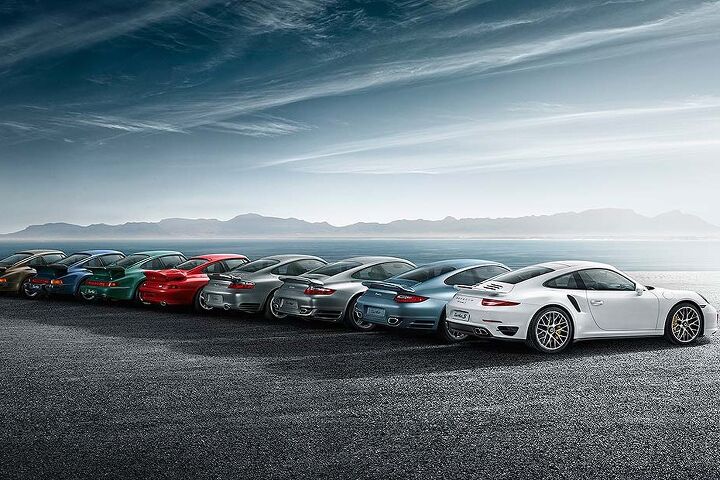
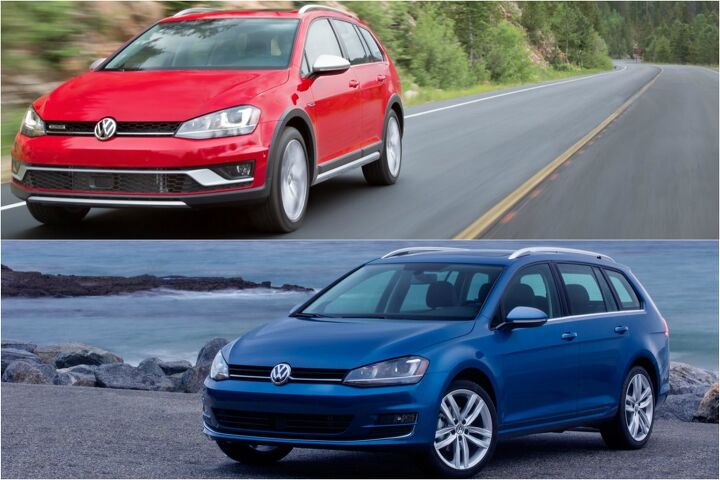








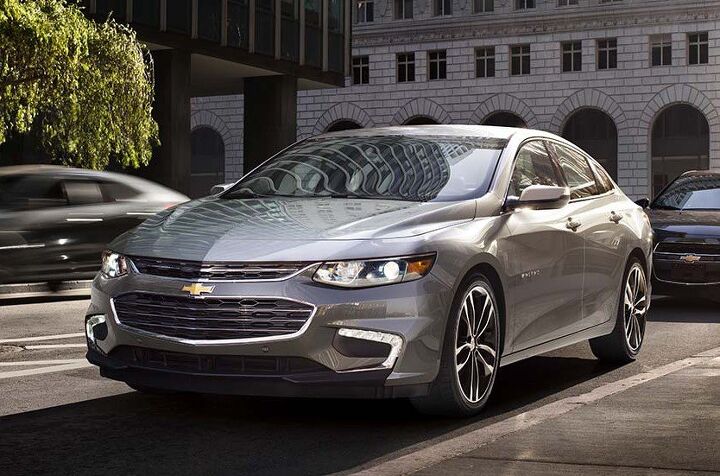



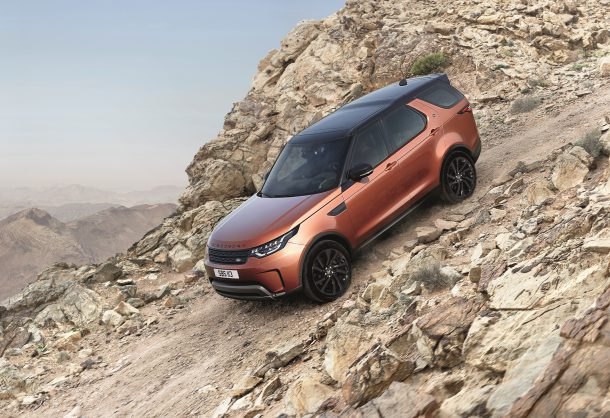
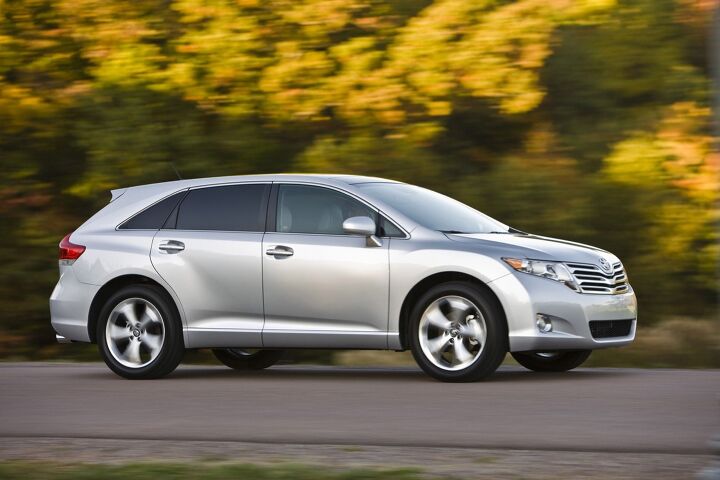

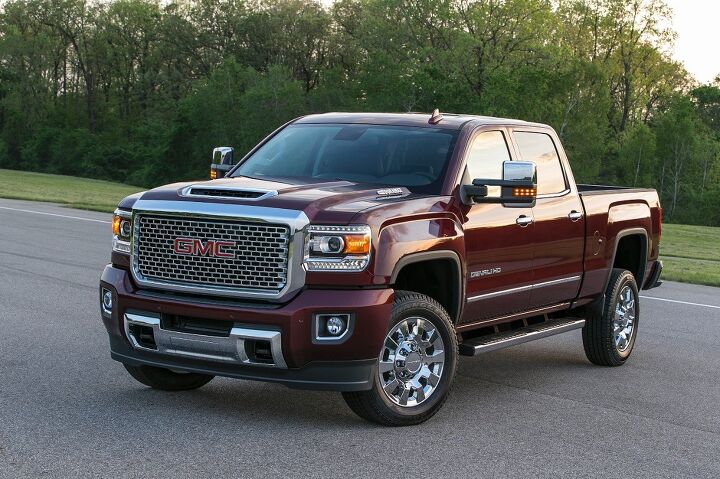


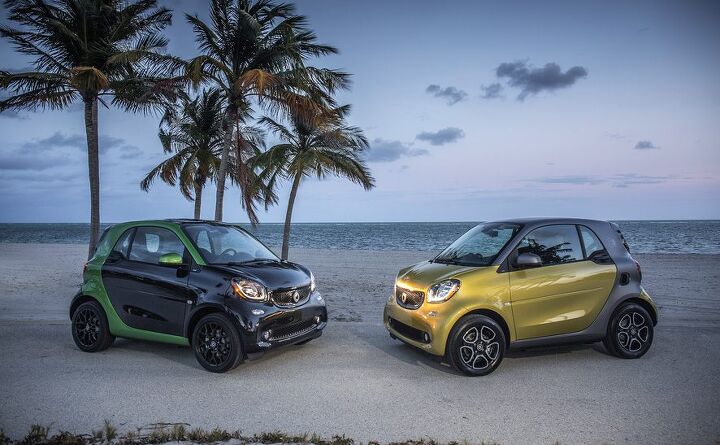

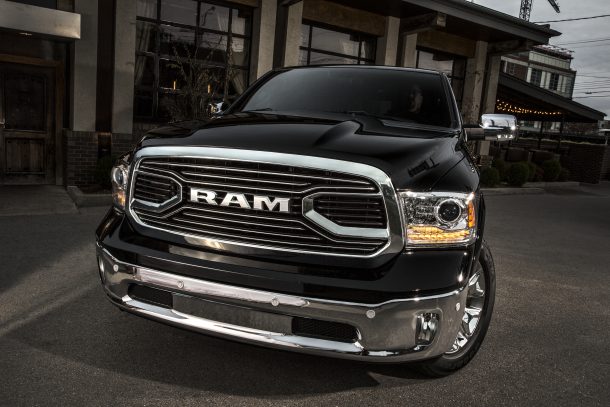











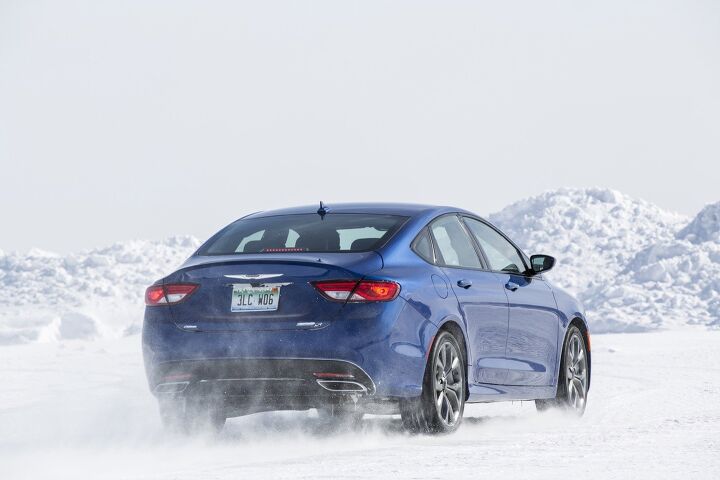



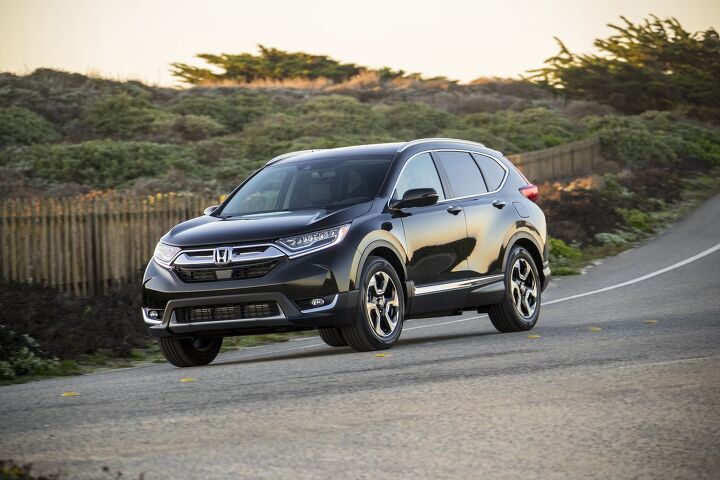
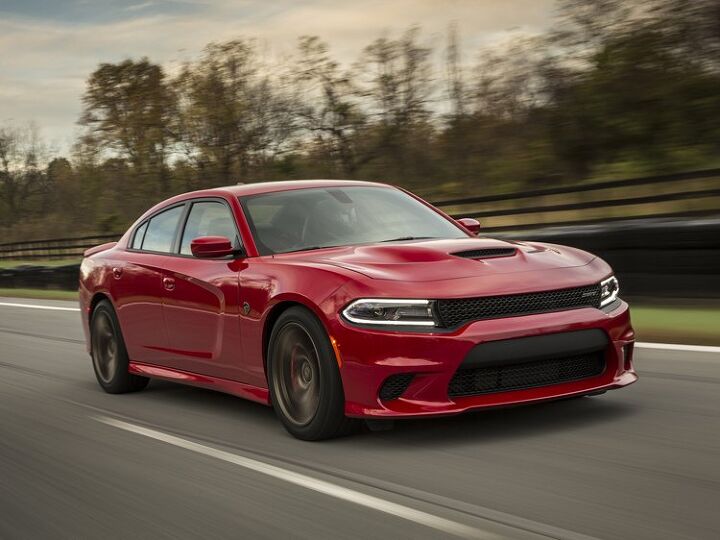
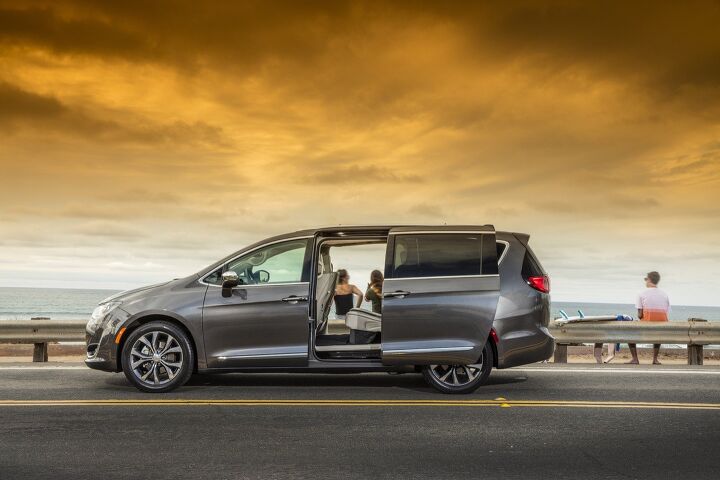




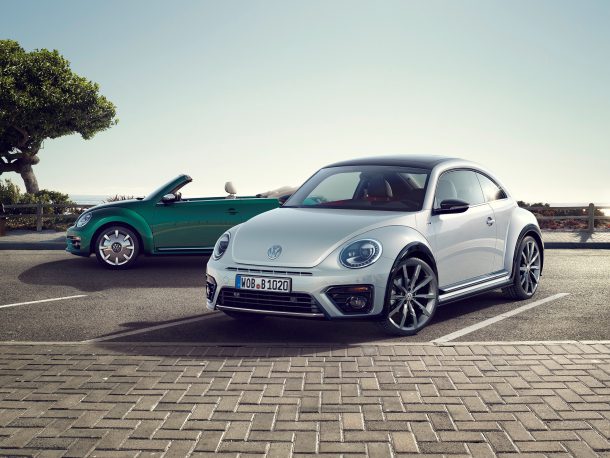


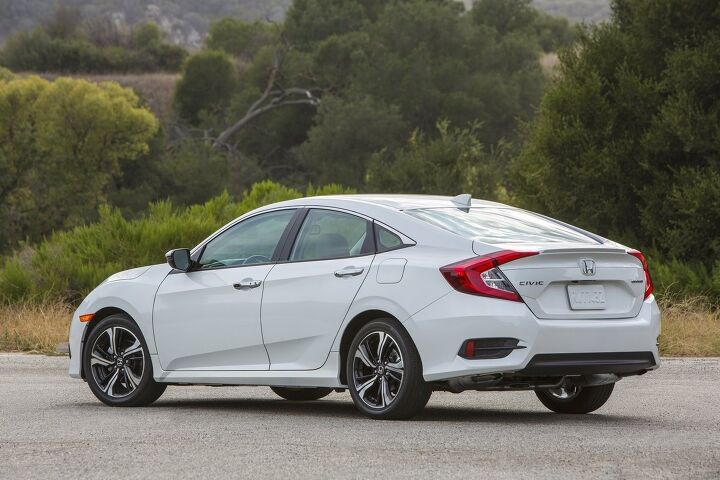

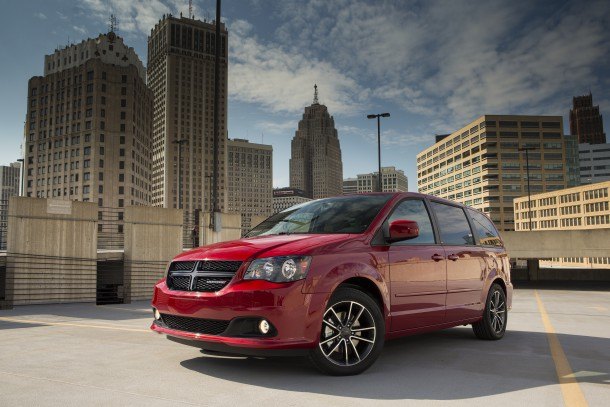














Recent Comments